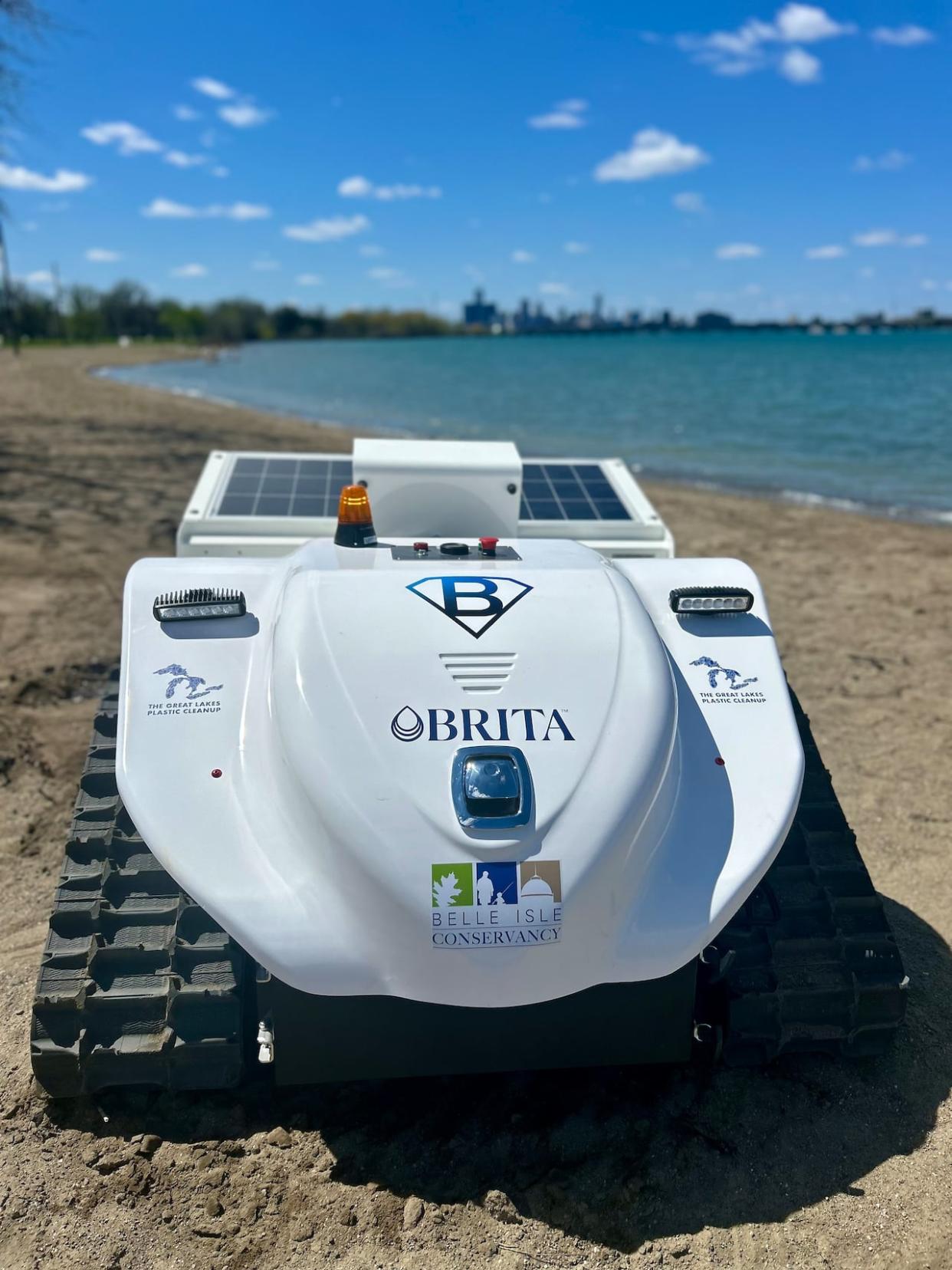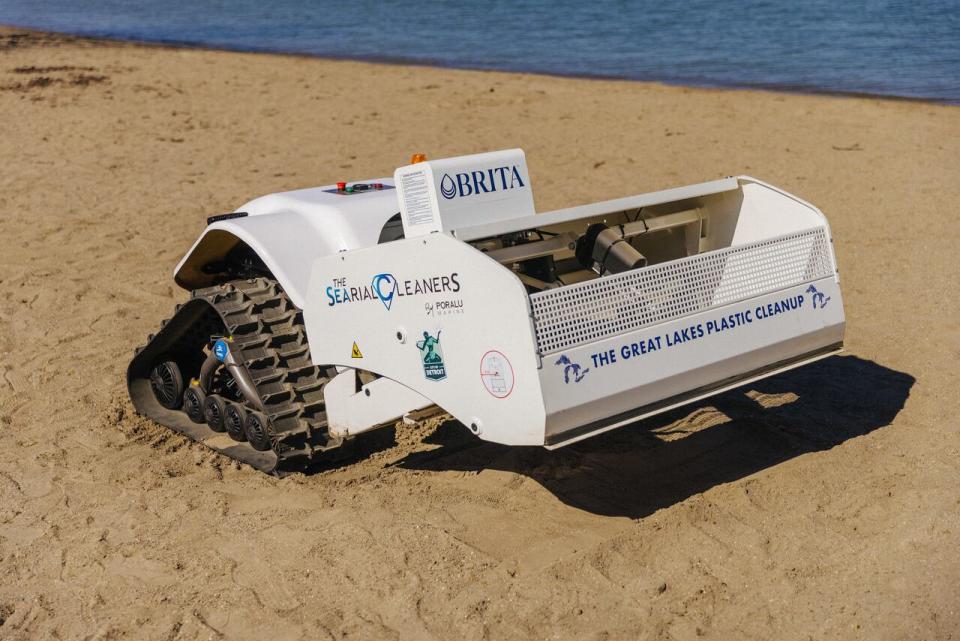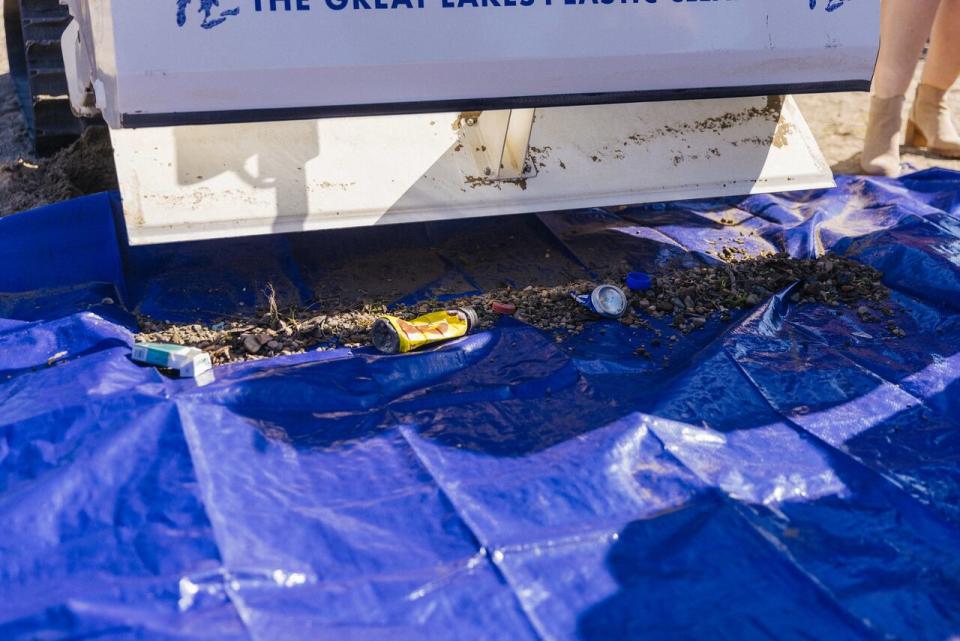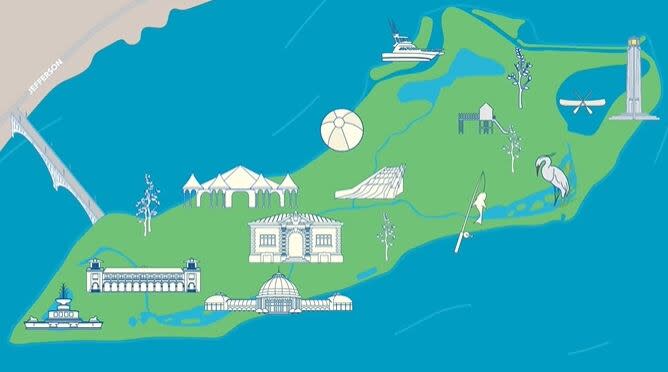This trash robot is cleaning up Michigan's shores, keeping plastic out of the Detroit River

- Oops!Something went wrong.Please try again later.
Picture a Roomba, but for the beach: BeBot is a new roving trash collector that will soon hit the shores of Belle Isle State Park.
It's all part of a bid not just to keep beaches clean for residents, but to prevent harmful trash from ending up in the waterways in the Great Lakes region.
LISTEN: Robot being used to pick up trash on Belle Isle
"I operate it on the Belle Isle beach and it really sifts into the sand to get a lot of that litter, pollution that you can't see with your eye because it's become buried into the sand," said Genevieve Rattray, the director of sustainability and advocacy for the Belle Isle Conservancy.
"Our goal is to remove it before it makes its way into the Detroit River, where it then will break up into microplastics and impact our Great Lakes region."

The Belle Isle, Mich., beach robot is a part of the Great Lakes Plastics Cleanup initiative. (City of Detroit)
The BeBot is similar to a remote-controlled car, Rattray says, except it weighs about 590 kilograms and has a solar panel on the back. Operated by Rattray and roving the beach, the machine sifts through the top inch or two of sand to pull out trash.
There are six of these litter-collecting robots around the Great Lakes, but this is the first BeBot in Detroit.
The machine was unveiled Monday for Earth Day and will have its first deployment on June 8 for World Ocean Day. Ahead of time, Rattray says they're brainstorming ways for people to get involved and possibly name the BeBot.
The BeBot doesn't replace the dedicated team of volunteers who help keep Belle Isle spick and span, Rattray said.
"This is really complementing that work as it allows the robot to go into the sand and get things that volunteers typically would not," Rattray said. She pointed to litter like cigarette butts: They're the top source of pollution worldwide and are hard to collect by hand.
"It's something new and exciting."
While the BeBot is confined to the sand, Rattray says there are similar machines that work in water. She's hopeful they'll have one in place next year.
BeBot trash collector a bid to keep plastic out of lakes, waterways
Lora Shrake is the senior program director for business and sustainability with the Council of the Great Lakes Region, a bi-national organization dedicated to the social and environmental issues around the Great Lakes.
The BeBot helps collect waste, yes, but being a bit of an unusual sight on the beach is also an education tool, she said.

Garbage, including recyclables like plastic, is scraped from Belle Isle Beach, Mich. (City of Detroit)
"It's an opportunity to educate them about the Great Lakes ... Many people that live in the region don't recognize this vital natural resource that we have in our own backyard," Shrake said, noting the Great Lakes are the source of drinking water for 40 million Canadians and Americans.
"It's just a really great educational opportunity to to teach why this waste doesn't belong there in the first place and what our options are to prevent that."
Shrake said because it's remote controlled with an operator, they can make sure wildlife features — and people — are avoided and not disturbed. Operators also go through the collected trash to categories it, and return natural objects like stones.
"They characterize that waste that's collected so we can get a better understanding of what is the pollution that's there," she said. "[It] helps us identify what those sources and the pathways of that pollution might be so that we can then try to get to the root of the problem."
And the machines are making a difference, Shrake says: Since the Council for the Great Lakes Region introduced its Great Lakes Plastic Cleanup in 2020, they've collected more than 180,000 pieces of debris.

The Belle Isle Conservancy says it's meant to protect, preserve, restore and enhance the natural environment and historic structures of Belle Isle, Mich., as a public park. (Belle Isle Conservancy)
Last year, with four BeBots running, they collected 50,000 pieces alone. This year there will be a total of seven BeBots running.
Plastic entering the Great Lakes is a "critical issue," she said. And while there aren't yet any BeBots operating on Canadian shores, Shrake says they're looking for money to introduce one in Canada sometime soon.
"Some models … suggest that as much as 22 million pounds of plastic could be entering the Great Lakes annually," Shrake said. "So it's an important one that we are looking at."

